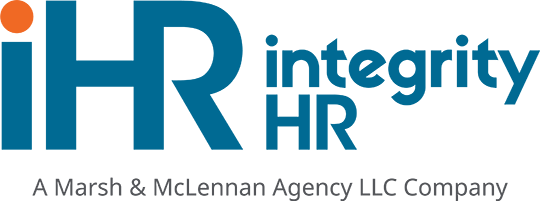Master the Maze of Human Resource Compliance: Strategies for Navigating Employee Laws and Regulations
 Human Resource compliance is a pivotal aspect of any business operation, ensuring that companies adhere to federal, state, and local laws governing employment. This compliance covers a broad range of regulations, including but not limited to labor laws, benefits administration, equal employment opportunity, workplace safety, and data protection. Given the complexity and the constant evolution of these laws, maintaining HR compliance is both a challenge and a necessity for businesses aiming to avoid legal liabilities and foster a positive work environment. This article explores the essence of HR compliance, pertinent questions for companies, and the fundamental areas requiring vigilant compliance practices.
Human Resource compliance is a pivotal aspect of any business operation, ensuring that companies adhere to federal, state, and local laws governing employment. This compliance covers a broad range of regulations, including but not limited to labor laws, benefits administration, equal employment opportunity, workplace safety, and data protection. Given the complexity and the constant evolution of these laws, maintaining HR compliance is both a challenge and a necessity for businesses aiming to avoid legal liabilities and foster a positive work environment. This article explores the essence of HR compliance, pertinent questions for companies, and the fundamental areas requiring vigilant compliance practices.
Understanding Human Resource Compliance
At its core, human resource compliance involves adhering to laws and regulations that pertain to employment and workplace practices. This encompasses a wide array of legislation designed to protect workers’ rights, ensure fair treatment, and safeguard personal and sensitive information. For businesses, the implications of HR compliance are far-reaching, affecting hiring practices, employee management, payroll, benefits, workplace safety, and termination processes.
Questions to Ensure Compliance
To navigate the intricate landscape of HR compliance, companies should consider several critical questions:
- Are our hiring practices compliant with equal employment opportunity laws?
This includes ensuring job postings, interview questions, and selection criteria do not discriminate against protected classes. - Do we have a comprehensive understanding of wage and hour laws applicable to our business?
Considerations include minimum wage requirements, overtime pay, classifications of exempt vs. non-exempt employees, and record-keeping practices. - How do we ensure compliance with workplace safety and health regulations?
This involves understanding obligations under the Occupational Safety and Health Administration (OSHA) and implementing necessary workplace safety protocols. - Are our benefits administration practices in line with federal and state requirements?
This encompasses compliance with the Affordable Care Act (ACA), Family and Medical Leave Act (FMLA), and other benefits-related legislation. - Do we have effective policies and training in place to prevent workplace harassment and discrimination?
Ensuring compliance involves regular training and clear, enforceable policies against harassment and discrimination. - How are we protecting employee data and ensuring privacy in compliance with laws?
With regulations like the General Data Protection Regulation (GDPR) affecting businesses worldwide, data protection practices are a significant compliance concern.
Basic Areas of Human Resource Compliance
Understanding the broad areas of Human resource compliance can help businesses develop a comprehensive compliance strategy. These areas include:
- Labor Laws and Regulations
Compliance in this area involves adhering to laws governing wages, hours, and working conditions, such as the Fair Labor Standards Act (FLSA), ensuring employees are paid fairly and work in safe, non-discriminatory environments. - Benefits Administration
This includes compliance with laws related to employee benefits, such as health insurance under the ACA, retirement plans, and FMLA requirements, ensuring employees receive the benefits they are entitled to by law. - Equal Employment Opportunity
Compliance here involves adhering to laws that prohibit discrimination in the workplace, such as Title VII of the Civil Rights Act, the Americans with Disabilities Act (ADA), and the Age Discrimination in Employment Act (ADEA), ensuring fair treatment of all employees and job applicants. - Workplace Safety
Ensuring a safe working environment as mandated by OSHA and state-specific safety regulations is crucial. This includes providing appropriate training, equipment, and protocols to minimize health and safety risks. - Immigration Law
Employers must comply with the Immigration Reform and Control Act (IRCA) by verifying employees’ eligibility to work in the United States, maintaining proper documentation, and avoiding discriminatory practices. - Employee Privacy and Data Protection
This involves adhering to laws that protect employee privacy and personal information, such as the Health Insurance Portability and Accountability Act (HIPAA) for health information and state-specific privacy laws affecting employee data.
Human Resource compliance is a dynamic and complex field that requires continuous attention and adaptation by businesses. By understanding the key areas of compliance, regularly reviewing and updating policies, and ensuring ongoing education and training for all employees, companies can navigate the complexities of HR law effectively. This not only minimizes legal risks but also promotes a fair, safe, and respectful workplace culture that attracts and retains talent.
As employment laws evolve, the commitment to Human Resource compliance must remain a top priority, underscoring the importance of proactive management and strategic planning in this critical area of business operations. Contact us to discuss the federal, state, and local compliance areas that are most relevant for your business. Click here for a FREE consultation.











